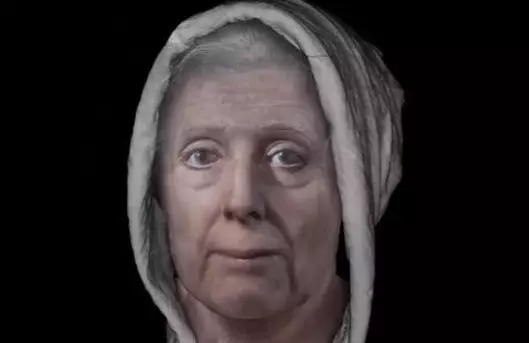
In 1704, under torture, 60-year-old Scotland Lilias Edie confessed to his sexual practitioners with the devil and in witchcraft. She was convicted and sentenced to execution. But she did not live to execution, he died in prison. 313 years after that, Scottish scientists were able to reconstruct the look of the witches.
Thousands and thousands of women over the centuries went under the church court on charges of witchcraft, were announced guilty and were executed. Now this face is a simple elderly woman can become a symbolic monument to all those whom this fate has not passed.
As part of the SCOTLAND's Time Travel Air Force Radio program (Scottish time), the Jewish Executive Center of Anatomy and the Identification of the University of Dundee under the leadership of Dr. Christopher Rinna renovated the reconstruction of Lilias Edie. The basis for the reconstruction was the photo of the skull of a 60-year-old woman - one and a few preserved skulls of the Scottish "Witches", since Lilias Edi was not burned on the fire, but died in prison, without waiting for a terrible execution.
"It was a really spectacular moment when Lilias's face suddenly appeared on the screen," recalls the Radio-winning Air Force Susan Morrison. Next, she continues: "Suddenly, we were face to face with a woman who looked so alive that she wanted to speak with her. But knowing her fate, it was very difficult to see her in her eyes. "
"From the point of view of a modern person, in the history of Lilias there is nothing that could talk about her belonging to the witch. She, like many others, was a victim of terrible circumstances. That is, we did not have any reasons to give our 3D reconstruction of an evil or ominous expression. Therefore, we decided to give a restored form a natural benevolent kind, "seemed to see the forensic examination.
Under what circumstances, Eddi died in prison, the information was not preserved. But historians suggest that she herself deprived himself to avoid terrible burning at the fire. After death, her body was buried on the shore between the borders of the tides and sings under great and heavy stone. Stone history is interpreted as a protective measure from the fear of contemporaries before the alleged witch may return in the form of evil ghost.
In the XIX century, scientific curiosity still defeated superstitious fears, and local historians exhumated the remains of Lilias Edie. After that, her skull came to the University Museum of St. Andreas, where it was almost a hundred years ago and photographed. Today the skull is considered missing, but in the National Library of Scotland, its photos were preserved for which reconstruction was made.
